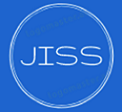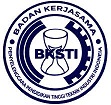Unsafe work practices and work-related stress in motorcycle repair shops: A cross-sectional analysis
Abstract
Keywords
Full Text:
PDFReferences
M. Sahri, M. P. Koentjoro, and S. B. Shamsudin, “Evaluation of erythrocyte sedimentation rate (ESR) of motorcycle workshop worker exposed to benzene,” Indones. J. Med. Lab. Sci. Technol., vol. 1, no. 2, pp. 52–57, Oct. 2019, doi: 10.33086/ijmlst.v1i2.1303.
C. Ayuningtyas, “The HbCO Concentration on Blood of Motorcycle Mechanic Workshop in Surabaya - A Cross-Sectional Study,” J. Kesehat. Lingkung., vol. 11, no. 4, p. 300, Oct. 2019, doi: 10.20473/jkl.v11i4.2019.300-308.
S. K. Sardar, C. H. Lim, S. H. Yoon, and S. C. Lee, “Ergonomic Risk Assessment of Manufacturing Works in Virtual Reality Context,” Int. J. Human–Computer Interact., pp. 1–17, Apr. 2023, doi: 10.1080/10447318.2023.2201558.
E. T. Valeeva et al., “Work environment of the automotive industry as a risk factor of diseases of the circulatory system among workers,” Heal. Risk Anal., pp. 95–103, Jun. 2023, doi: 10.21668/health.risk/2023.2.09.eng.
P. Mydlowski and S. Moskwa, “New approach to functional safety work products for advanced automotive projects,” in 2022 26th International Conference on Methods and Models in Automation and Robotics (MMAR), IEEE, Aug. 2022, pp. 342–345. doi: 10.1109/MMAR55195.2022.9874338.
S. Ludy and A. J. Eyre, “Personal Protective Equipment,” in Ciottone’s Disaster Medicine, Elsevier, 2024, pp. 323–329. doi: 10.1016/B978-0-323-80932-0.00049-5.
U. Hauptmanns, “Personal Safety and Personal Protective Equipment,” in Process and Plant Safety, Berlin, Heidelberg: Springer Berlin Heidelberg, 2015, pp. 189–206. doi: 10.1007/978-3-642-40954-7_5.
S. Wan, D. Li, J. Gao, and J. Li, “A knowledge based machine tool maintenance planning system using case-based reasoning techniques,” Robot. Comput. Integr. Manuf., vol. 58, pp. 80–96, Aug. 2019, doi: 10.1016/j.rcim.2019.01.012.
W. Xu and L. Cao, “Optimal maintenance control of machine tools for energy efficient manufacturing,” Int. J. Adv. Manuf. Technol., vol. 104, no. 9–12, pp. 3303–3311, Oct. 2019, doi: 10.1007/s00170-018-2233-1.
Y.-J. Lu, W.-C. Lee, and C.-H. Wang, “Using data mining technology to explore causes of inaccurate reliability data and suggestions for maintenance management,” J. Loss Prev. Process Ind., vol. 83, p. 105063, Jul. 2023, doi: 10.1016/j.jlp.2023.105063.
W. Tao, Z.-H. Lai, M. C. Leu, Z. Yin, and R. Qin, “A self-aware and active-guiding training & assistant system for worker-centered intelligent manufacturing,” Manuf. Lett., vol. 21, pp. 45–49, Aug. 2019, doi: 10.1016/j.mfglet.2019.08.003.
S. Partheeban, “Employees’ training and development as effectiveness instrument for organizational productivity in manufacturing sector in chennai,” INDIAN J. Appl. Res., pp. 1–3, Jun. 2021, doi: 10.36106/ijar/7811960.
A. Z. Fagamova, V. A. Kaptsov, L. K. Karimova, I. V. Shapoval, and N. A. Muldasheva, “Workplace stress: the main causes and preventive measures (literature review),” Hyg. Sanit., vol. 101, no. 9, pp. 1065–1071, Sep. 2022, doi: 10.47470/0016-9900-2022-101-9-1065-1071.
J. Vinoth, S. Balaji, D. K. Ganesan, and T. Jain, “Mental Health among Automobile industry workers in Chennai – A Cross-sectional study from a Single Industrial unit,” Int. J. Occup. Saf. Heal., vol. 13, no. 3, pp. 346–352, Jul. 2023, doi: 10.3126/ijosh.v13i3.47093.
S. Chaisin and N. Rojniruttikul, “Factors Influencing Working Stress Of Operative Employees: A Case Of Automotive Industry In Ladkrabang Estate,” in 2021 3rd International Electronics Communication Conference (IECC), New York, NY, USA: ACM, Jul. 2021, pp. 57–62. doi: 10.1145/3475971.3475981.
M. A. Morrowatisharifabad et al., “Prevalence of Depression, Anxiety, and Stress in Workers of Petrochemical Industry: a cross-sectional study in Assaluyeh port,” Occup. Hyg. Heal. Promot., Nov. 2018, doi: 10.18502/ohhp.v2i3.149.
N. Sasaki et al., “The Survey Measure of Psychological Safety and Its Association with Mental Health and Job Performance: A Validation Study and Cross-Sectional Analysis,” Int. J. Environ. Res. Public Health, vol. 19, no. 16, p. 9879, Aug. 2022, doi: 10.3390/ijerph19169879.
S. Givehchi, S. Vosoughi, and G. Bahrami Azar, “Workforce safety culture, job stress and job satisfaction in an automotive industry,” Sigurnost, vol. 65, no. 1, pp. 25–37, Apr. 2023, doi: 10.31306/s.65.1.2.
H. Mulugeta, A. Tamene, T. Ashenafi, S. M. Thygerson, and N. D. Baxter, “Workplace stress and associated factors among vehicle repair workers in Hawassa City, Southern Ethiopia,” PLoS One, vol. 16, no. 4, p. e0249640, Apr. 2021, doi: 10.1371/journal.pone.0249640.
M. Suherman, E. Rimawan, R. Hidayat, and R. Alfian, “Influence of Work Stress and Leadership on Employee Performance in Special Check Posts in Automotive Industry by Using SEM-PLS,” Int. J. Innov. Sci. Res. Technol., vol. 5, no. 8, pp. 576–582, Aug. 2020, doi: 10.38124/IJISRT20AUG216.
R. Modranský, K. Bočková, and M. Hanák, “Project Manager and Stress in Coping with Demanding Situations in Automotive Industry,” Emerg. Sci. J., vol. 4, no. 5, pp. 418–426, Oct. 2020, doi: 10.28991/esj-2020-01241.
I. Aydin, “Effects of Work-Related Stressors and Work Engagement on Work Stress: Healthcare Managers’ Perspective,” Cent. Eur. Bus. Rev., vol. 11, no. 4, pp. 47–62, Sep. 2022, doi: 10.18267/j.cebr.299.
S. De Hert, “Burnout in Healthcare Workers: Prevalence, Impact and Preventative Strategies,” Local Reg. Anesth., vol. Volume 13, pp. 171–183, Oct. 2020, doi: 10.2147/LRA.S240564.
K. Prasad et al., “Prevalence and correlates of stress and burnout among U.S. healthcare workers during the COVID-19 pandemic: A national cross-sectional survey study,” EClinicalMedicine, vol. 35, p. 100879, May 2021, doi: 10.1016/j.eclinm.2021.100879.
A. Z. Harsini, F. Ghofranipour, H. Sanaeinasab, F. Amin Shokravi, P. Bohle, and L. R. Matthews, “Factors associated with unsafe work behaviours in an Iranian petrochemical company: perspectives of workers, supervisors, and safety managers,” BMC Public Health, vol. 20, no. 1, p. 1192, Dec. 2020, doi: 10.1186/s12889-020-09286-0.
K. Sudiana, “Handbook of Occupational Safety and Health as a Guiding Supplement for Occupational Safety and Health in Chemical Laboratory,” Int. J. Nat. Sci. Eng., vol. 6, no. 3, pp. 99–109, Oct. 2022, doi: 10.23887/ijnse.v6i3.53333.
R. Caers, K. L. Akgul, S. Baert, T. De Feyter, and M. De Couck, “Too sick or not too sick? The importance of stress and satisfaction with supervisor support on the prevalence of sickness presenteeism,” Int. J. Occup. Saf. Ergon., vol. 27, no. 1, pp. 278–289, Jan. 2021, doi: 10.1080/10803548.2019.1570720.
A.-M. Hultén, P. Bjerkeli, and K. Holmgren, “Work-related stress predicted future sick leave in primary health care patients,” Eur. J. Public Health, vol. 32, no. Supplement_3, Oct. 2022, doi: 10.1093/eurpub/ckac131.265.
A. Asfaw, “Paid Sick Leave and Self-Reported Depression and Anxiety: Evidence from a Nationally Representative Longitudinal Survey,” Am. J. Prev. Med., vol. 66, no. 4, pp. 627–634, Apr. 2024, doi: 10.1016/j.amepre.2023.11.012.
P. Sikandar, A. R. Aleemi, M. Irshad, and Sundus, “Feeling Black & Blue yet at Work: Physical Job Stressors and Sickness Presenteeism with the Moderation of Organizational Justice,” Sustain. Bus. Soc. Emerg. Econ., vol. 4, no. 1, pp. 167–178, Mar. 2022, doi: 10.26710/sbsee.v4i1.2207.
T. Morken, I. Haukenes, and L. H. Magnussen, “Attending work or not when sick – what makes the decision? A qualitative study among car mechanics,” BMC Public Health, vol. 12, no. 1, p. 813, Dec. 2012, doi: 10.1186/1471-2458-12-813.
F. Valirad, M. Ghaffari, A. Abdi, M. Attarchi, S. F. Mircheraghi, and S. Mohammadi, “Interaction of Physical Exposures and Occupational Factors on Sickness Absence in Automotive Industry Workers,” Glob. J. Health Sci., vol. 7, no. 6, Apr. 2015, doi: 10.5539/gjhs.v7n6p276.
Z. B. Alemohammad and K. Sadeghniiat-Haghighi, “Risk of Fatigue at Work,” in Fatigue Management, New York, NY: Springer New York, 2018, pp. 181–191. doi: 10.1007/978-1-4939-8607-1_14.
S. Hiestand, I. Forthun, S. Waage, S. Pallesen, and B. Bjorvatn, “Associations between excessive fatigue and pain, sleep, mental-health and work factors in Norwegian nurses,” PLoS One, vol. 18, no. 4, p. e0282734, Apr. 2023, doi: 10.1371/journal.pone.0282734.
T. L. Watterson, L. M. Steege, D. A. Mott, J. H. Ford, E. C. Portillo, and M. A. Chui, “Sociotechnical Work System Approach to Occupational Fatigue,” Jt. Comm. J. Qual. Patient Saf., vol. 49, no. 9, pp. 485–493, Sep. 2023, doi: 10.1016/j.jcjq.2023.05.007.
DOI: http://dx.doi.org/10.62870/jiss.v11i1.27423
Refbacks
- There are currently no refbacks.
 is supported by
is supported by








